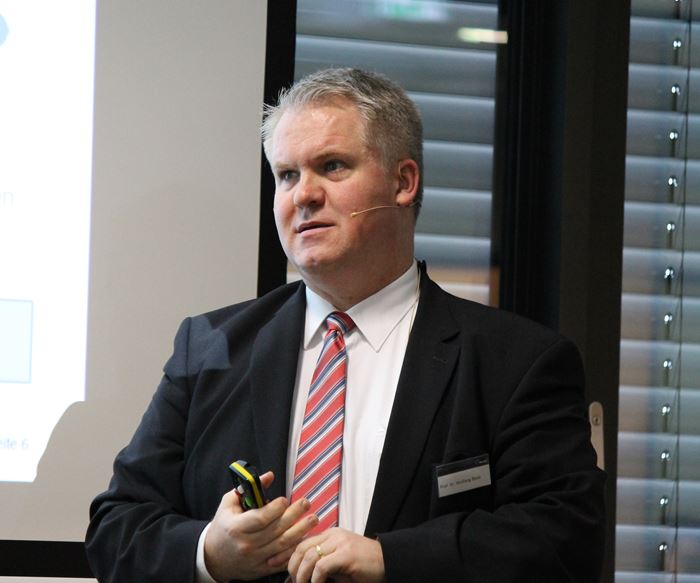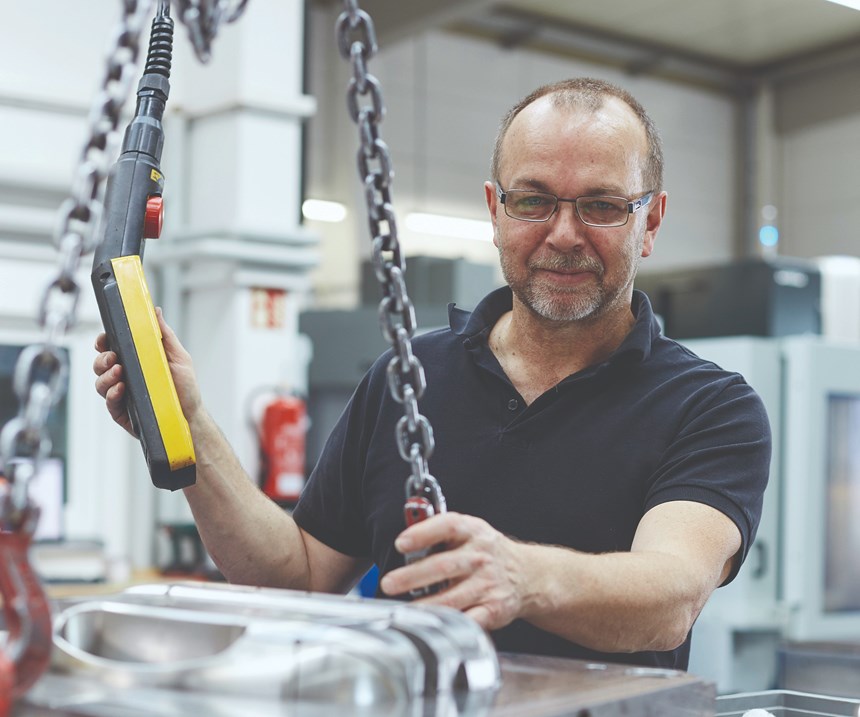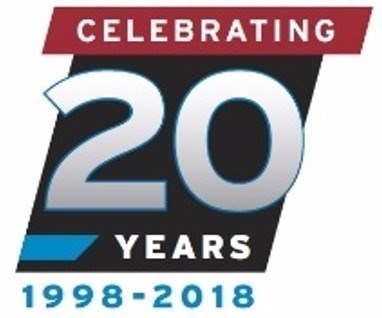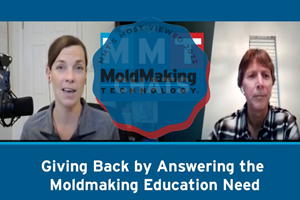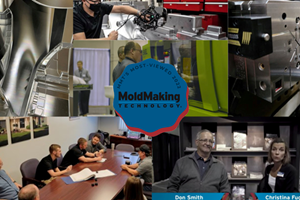The 1990s were dominated by the events surrounding the Central and Eastern European countries and the disintegration of the Soviet Union. The advent of the European Union (EU) and Economic Monetary Union represented a step toward a policy of European integration, and 1995 marked the year of the EU's neutral expansion to 15 member states.
The lifting of trade restrictions in the EU meant that competition was suddenly an imminent reality for the tool, moldmaking and die-making industry. Everything was in motion, including the labor market. Now there was a large number of suppliers from the "cheap" countries that, because of the absence of security policies, were able to produce much more cost-effectively than Western European or German companies.
The lifting of trade restrictions in the EU meant that competition was suddenly an imminent reality for the tool, mold and die-making industry.
In 1998, almost every die-making company in Germany began to consider partnerships and alliances with companies in Eastern Europe. A significant number of tool and moldmaking operations formed, particularly in companies where toolmaking existed as an internal support division, and the work was shifted to partner companies in Poland, the Czech Republic, Slovakia and Hungary.
Twenty years ago, investors were also focused on new markets like information technology, multimedia or telecommunications. For the European tool and moldmaking industry, this period was characterized mainly by the mobile phone industry. A gold-rush mentality dominated companies that produced molds for mobile phones.
"However, for the industry, this also meant becoming more efficient," professor Thomas Seul, president of the German Tool and Moldmakers Association (VDWF), says. "We were discussing the topic of how to shorten time-to-manufacturing. Production times for tools were cut in half and copy tools (or repeat molds and tools with the shortest production times) were suddenly part of the standard tool and moldmaking repertoire."
“Production times for tools were cut in half and copy tools were suddenly part of the standard tool and moldmaking repertoire.”
From Manual Production to Industrial Production
However, this transition could only be achieved by automation and the advent of digitalization. During this period, the moldmaking industry was standing at the transition between manual work and industrial production. During this turbulent period, CAD/CAM and simulation were making their way into many small and medium-sized shops that dominated the industry in Germany and in Europe.
Even so, moldmakers were still operating in a very old-fashioned manner. They were very self-absorbed. The number one explanation of a marketing strategy in the industry was, “People know me.” Period. Moldmakers were still using regular mail to communicate, but the best form of communication for shop owners was the telephone. The word "data" had not yet come into existence and was a foreign concept in this industry. From a technological standpoint, some places were still in the Stone Age. Wooden models that were copy-milled following customer approval were sanded by hand and used to produce electrodes. Manual pre-milling was carried out before performing EDM.
However, by the end of the 1990s, moldmakers were increasingly using high-speed cutting (HSC) in electrode production. "Many companies were under the assumption that they could succeed completely without EDM," Matthias Schmidt, head of sales at OPS-Ingersoll in Burbach, Germany, says. (MC Machinery represents OPS-Ingersoll in the United States.) "When, in fact, HSC was being used for the production of electrodes, which started the big boom toward the transition to graphite as an electrode material. It also laid the groundwork for advanced automation. Moldmakers were using the first handling systems for single machine tools during this period.”
Automation and CNC technology continued to gradually make their way into the design and planning phases of moldmaking. According to professor Boos of the WBA (Werkzeugbau Akaemie), the German toolmaking academy at the RWTH Aachen, moldmakers were successfully using the new CAD and CAM systems to significantly increase machine tool efficiency, bringing about industrial tool and moldmaking.
Wolfgang Fassnacht agrees that much of what his 20-man operation produced in this period was done with conventional methods. For more than 25 years, the Swabia-based W. Fassnacht Werkzeug- und Formenbau has been providing high-quality molds to a diverse range of industries. "For many companies, integrated end-to-end CNC solutions were standard. In addition to CNC milling, all of our production was carried out using conventional machines. For us, this was a period when CNC machines were increasingly replacing conventional machines. This had an enormous impact on our investment activity.”
However, despite the increasing cost pressure and higher demands for speed, precision was in the hands of the moldmaker rather than in the machine, and edge rounding and 3D contours still required manual processes.
“Today, speed and precision are achieved by using the most modern equipment and is also required by customers," Axel Wittig of Webo Werkzeugbau, a medium-sized mold shop located in southern Germany, says. "Manual work is not looked upon favorably due to the requirements for interchangeability, so work is required to be carried out mechanically. True manual work is being reduced at an extreme rate. Competition from the Far East is currently increasing cost and competitive pressure, and we can only deal with this pressure by using innovation, process streamlining and new product ideas. The ‘paint by numbers’ philosophy of 20 years ago is not a legitimate survival strategy in this day and age.”
"For the industry, this meant becoming more efficient. The topic of time-to-manufacturing was discussed and how to shorten it. Production times for tools were cut in half and repeat molds with the shortest production times were suddenly part of the standard tool and moldmaking repertoire."
Most Significant Changes
The survival strategy of today calls for internationalization, digitalization, automation and communication. Even after 20 years, the tool and moldmaking industry still finds itself in a stage of industrialization. These pressures stem from globalization, Industry 4.0 and additive manufacturing.
The mold itself, as it exists solely in the form of a service, is no longer enough to remain competitive. “Successful moldmaking businesses today not only offer their customers the most modern equipment and well-trained staff, but additional services as well," Wittig says. “These services can include all aspects of process support, including part development and design, FEM calculations, mold and molding simulation, bench tests and prototyping. The actual creation of the mold often does not occur until the very end of the process.”
The markets are international, not only with respect to customer networks but also with respect to supplier networks. European suppliers and North American suppliers have had their subsidiary companies successfully established in the Far East for quite some time, accompanied by their tried-and-tested toolmakers. “Globally, and from the standpoint of tool and moldmaking technology, there are no limits. The competition is moving away from the ‘me-too’ product model toward specialization,” Fassnacht says.
"Successful moldmaking businesses today not only offer their customers the most modern equipment and well-trained staff, but additional services as well.”
Fassnacht also says that, despite our increasingly global world, more and more customers recognize that molds and tools made by different manufacturers are not one and the same. “Compared to 20 years ago, molds have become much more demanding from a technical standpoint as well as from customer requirements. Meanwhile, multi-component technology and special solutions are common practice.”
Another important development from the last 20 years is the transition from the moldmaker who “can do it all by himself” to the expert tool and moldmaker. The strict division of labor, which Henry Ford had already developed, means that jobs are designed for very specific tasks within mold shops. “The development of experts in their fields within shops is important,” says Seul. “You just have to be careful that the individual manufacturing areas within your shop collaborate and work hand in hand.”
Over the last 20 years, companies also have learned how to communicate with each other and exchange information. Markets have become global, and yesterday’s neighboring competitors help out by sharing their experience. A national sense of community has developed and currently characterizes mold shops in Germany and Europe. However, as is the case across industries, the tool and moldmaking industry must solve the workforce dilemma as many experienced professionals retire and the search for young talent becomes more difficult.
About the Author
Barbara Schulz
Barbara Schulz is Gardner Business Media’s European correspondent. She can be reached at bschulz@gardnerweb.com.
Get Social and Be a Part of the 20th Anniversary Coverage with #MMTMag20 on
Related Content
MMT Chats: American Mold Builders Association on Best Practices for Employee Attraction and Hiring
MoldMaking Technology Editorial Director Christina Fuges sits down with AMBA’s Managing Director Kym Conis and the Director of Strategic Execution Rachael Pfenninger to discuss its Employee Attraction and Hiring Playbook and the Workforce Development Task Force. This episode is brought to you by ISCAR with New Ideas for Machining Intelligently.
Read MoreMMT Chats: Giving Back by Answering the Moldmaking Education Need
MoldMaking Technology Editorial Director Christina Fuges checks in with Bruce Cateon, an executive advisor at OASIC Consulting. Bruce started out in moldmaking, eventually becoming an industry consultant and taking time to work on his passion project the “Injection Mold Design Handbook” as a way of giving back to the industry that has given him so much. This episode is brought to you by ISCAR with New Ideas for Machining Intelligently.
Read MoreHands-on Workshop Teaches Mold Maintenance Process
Intensive workshop teaches the process of mold maintenance to help put an end to the firefighting culture of many toolrooms.
Read MoreMost-Viewed Content of 2022
The most popular MoldMaking Technology content according to analytics reports over the past 12 months.
Read MoreRead Next
The Bottom Line: Taxation of Mold Builders: 1998 vs. 2018
Tax laws are much more favorable for mold shops today than they were 20 years ago.
Read MoreReasons to Use Fiber Lasers for Mold Cleaning
Fiber lasers offer a simplicity, speed, control and portability, minimizing mold cleaning risks.
Read MoreAre You a Moldmaker Considering 3D Printing? Consider the 3D Printing Workshop at NPE2024
Presentations will cover 3D printing for mold tooling, material innovation, product development, bridge production and full-scale, high-volume additive manufacturing.
Read More


